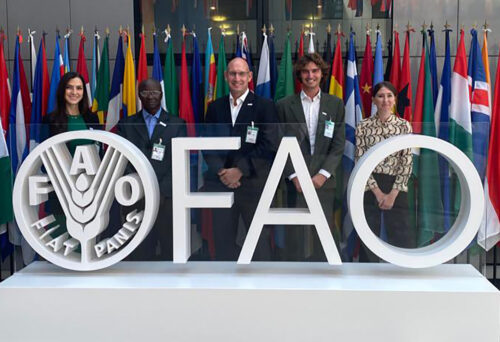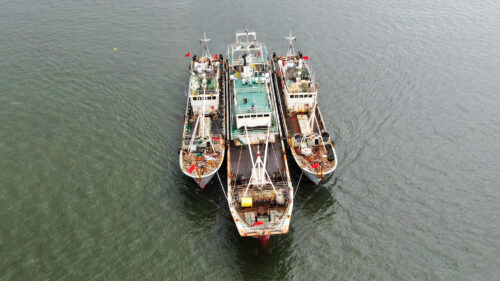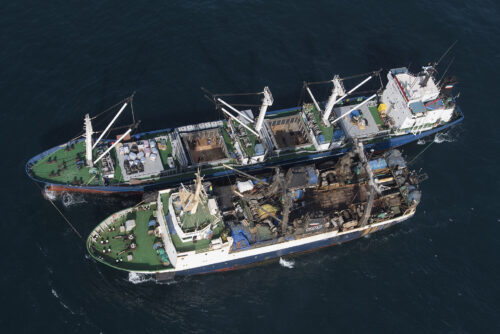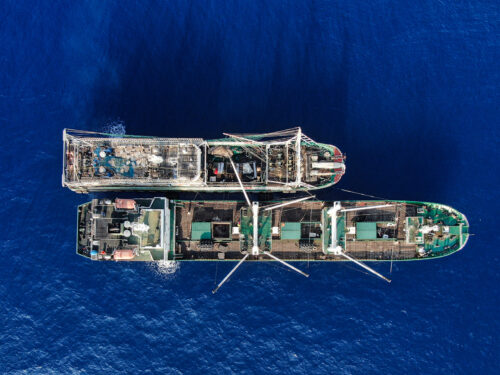Transshipment
Transshipment—the transfer of catch between vessels—plays a vital role in the commercial fishing industry. Each year thousands of fishing vessels offload fresh catch like tuna, crab, and small pelagic fish onto refrigerated cargo vessels called carriers, commonly referred to as “reefers,” which then take it to shore for processing. This allows fishers to avoid a costly and time-consuming trip back to port, increasing the freshness and value of their catch.
The challenge
While transferring catch from one vessel to another may seem innocuous, it often takes place at sea, out of sight and reach of authorities. Limitations in effective monitoring and controls allows unscrupulous operators to manipulate or omit data pertaining to their fishing practices in an effort to gain financial advantage. This lack of transparency enables conditions that can lead to illegal, unreported and unregulated fishing and also opens the door for other maritime crimes to take place, such as the trafficking of weapons, drugs, and even people.
Insufficient data and inaccurate reporting of catch can lead to skewed stock assessments, which can impact conservation and management efforts across valuable fisheries. It can also impede traceability efforts, since illegally caught fish is often mixed with legal catch. Without adequate regulatory management, transshipment will remain the last frontier in legal fishing.
How Global Fishing Watch is transforming transshipment
Global Fishing Watch is harnessing technology to create innovative tools that can help bring transparency to one of the most secretive practices in the fishing industry. Through publicly sharing map visualizations and creating data and analysis tools, we seek to inform management and policy efforts and provide a more complete picture of activities taking place at sea.
We’ve partnered with the IMCS network, Pew Charitable Trusts and Trygg Mat Tracking to look at how contributions from the ground can inform the UN FAO’s Fisheries & Aquaculture guidelines on enhanced regulation, monitoring and control of global transshipment activities.
Recent Work

Transparency Can Bring Forward Outcomes of International Fisheries Meeting
Committee on fisheries advances transshipment monitoring, vessel identification and tracking to fight illegal fishing International fisheries are managed through a patchwork of regulations, which present loopholes that are often exploited for financial gain, undermining collective

Canada Recognizes Need for Strong and Consistent Transshipment Measures
Key ocean nation outlines how voluntary guidelines can set a clear policy framework for enhanced regulation, monitoring and control of at-sea transfer of fishing catch Fishing is a crucial part of life for people throughout

Recent Study Shows How Satellite Technology Can Help Track Illegal Fishing Throughout the Pacific Region
Enhanced transshipment monitoring is key in reducing illegal catch Tuna fisheries are vital to livelihoods, economies and cultures across the Pacific Islands region. Producing over half of the global catch—a portion estimated at $26 billion

Contributions from the Ground Can Strengthen New Transshipment Guidelines
As the FAO and its Member States develop voluntary measures on transshipment, experience from the ground informs four key recommendations This year, the Food and Agricultural Organization of the United Nations and its Member States